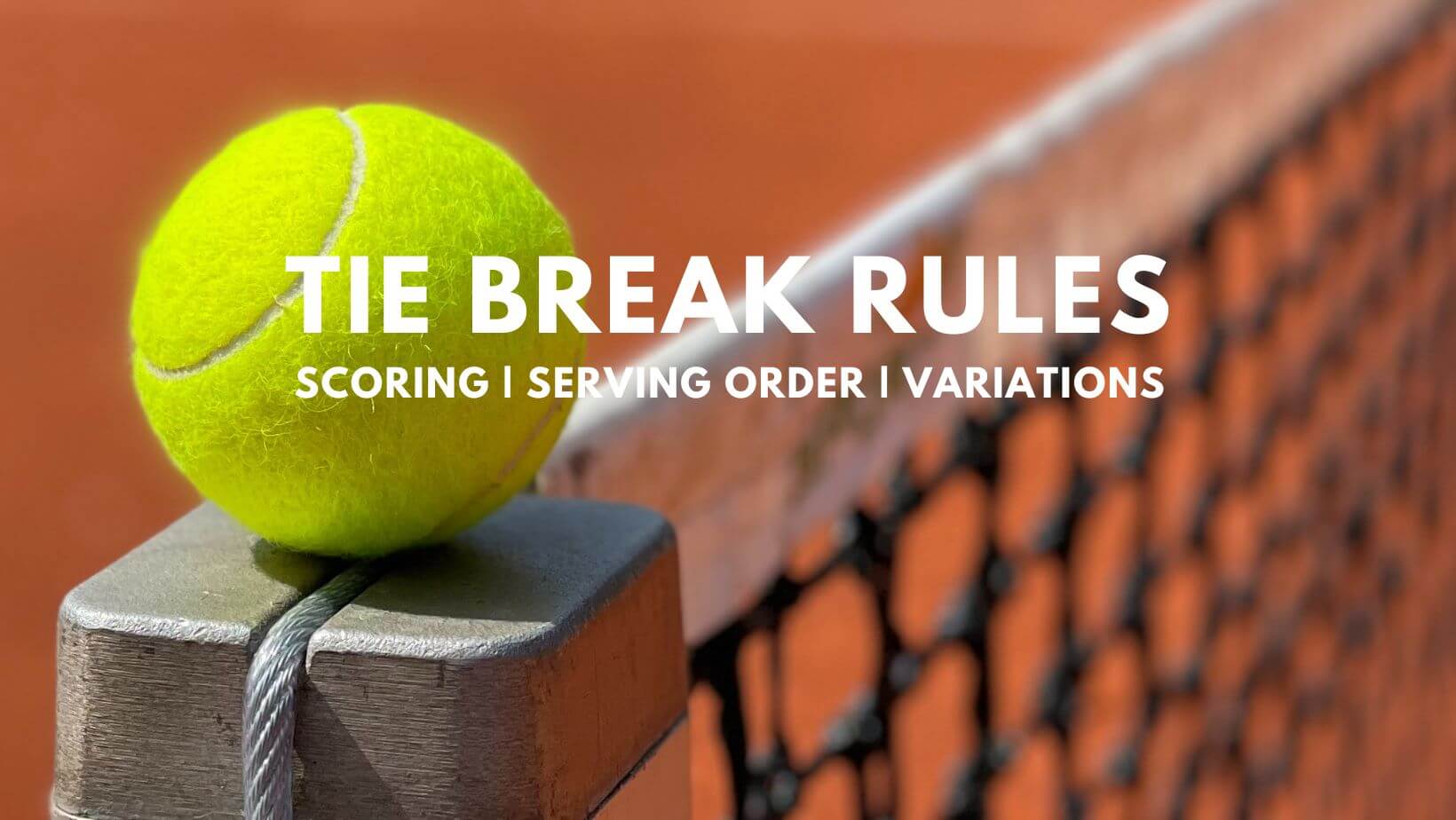Tiebreak Basics

Tennis tiebreak rules – A tiebreak is a scoring system used in tennis to determine the winner of a set when the score reaches 6-6. The purpose of a tiebreak is to break the tie and decide the set quickly and efficiently.
In the thrilling realm of tennis, tiebreaks resolve deadlocked sets with a unique set of rules. These rules, akin to the legal intricacies championed by Robert F. Kennedy Jr. , demand precision and strategy. Players alternate serving two points each, aiming to gain a decisive advantage before their opponent can reach seven points with a two-point lead.
In a tiebreak, players alternate serving two points each, starting with the player who served first in the set. The scoring system is different from regular tennis, with points being awarded as follows: 1 point for winning the first point, 2 points for winning the second point, and so on. The first player to reach 7 points with a margin of at least 2 points wins the tiebreak and the set.
In the realm of tennis, tiebreaks stand as crucial moments, where victory or defeat hangs in the balance. Just as the king of Spain reigns over his kingdom, a player must command the tiebreak to seize triumph. The rules of the tiebreak are meticulously crafted, ensuring fairness and excitement, much like the governance of a wise monarch.
Serving and Receiving
In a tiebreak, the server alternates serving from the deuce court and the ad court. The receiver stands behind the baseline and can return the serve from anywhere in the court.
Advanced Tiebreak Strategies: Tennis Tiebreak Rules

Tiebreaks are often decided by the smallest of margins, so it is important for players to have a well-thought-out strategy going into them. There are a number of different strategies that players can use to win a tiebreak, and the best strategy will vary depending on the player’s strengths and weaknesses.
One common strategy is to play aggressively and try to hit winners. This can be a risky strategy, but it can also be very effective if executed properly. Players who are good at hitting winners will often try to take the net early in the tiebreak and put pressure on their opponent. They will also try to hit deep shots and force their opponent to make mistakes.
Another common strategy is to play defensively and try to force your opponent to make mistakes. This can be a more conservative strategy, but it can also be very effective against players who are prone to making errors. Players who are good at playing defensively will often try to stay back in the court and wait for their opponent to make a mistake. They will also try to hit deep shots and keep the ball in play.
Ultimately, the best tiebreak strategy will vary depending on the player’s strengths and weaknesses. However, there are a few general tips that can help all players improve their tiebreak performance.
Psychological Factors
Tiebreaks can be very stressful, and it is important for players to be able to stay calm and focused under pressure. Players who are able to control their emotions and stay focused will often have a better chance of winning a tiebreak.
Here are a few tips for staying calm and focused during a tiebreak:
- Take deep breaths and try to relax.
- Focus on the present moment and don’t worry about the past or the future.
- Visualize yourself winning the tiebreak.
- Talk to yourself positively and encourage yourself.
Historical Evolution of Tiebreak Rules

Tiebreak rules in tennis have evolved over time to enhance the game’s fairness, excitement, and strategic depth. The introduction of the tiebreak in the 1970s revolutionized the sport, addressing the issue of marathon sets that could stretch beyond reasonable durations.
The original tiebreak format, known as the “9-point tiebreak,” was implemented in 1975. This format required players to win by a margin of two points, similar to the current format. However, the 9-point tiebreak was criticized for its potential to end matches prematurely, especially on fast surfaces where serves dominated.
12-Point Tiebreak
In 1989, the International Tennis Federation (ITF) introduced the 12-point tiebreak to address the concerns raised by the 9-point format. The 12-point tiebreak provided more opportunities for players to break serve and allowed for a more balanced and strategic contest.
No-Ad Scoring, Tennis tiebreak rules
In 2006, the ITF introduced no-ad scoring in tiebreaks. Under this rule, players no longer had the advantage of serving twice in a row when the score reached deuce. Instead, they alternated serves every point, ensuring a more balanced and unpredictable outcome.
First-to-10 Tiebreak
In 2019, the ITF announced the implementation of the first-to-10 tiebreak format in all Grand Slams. This change was made to further reduce the potential for marathon tiebreaks and to increase the overall pace and excitement of matches.
Impact on the Game
The evolution of tiebreak rules has significantly impacted the game of tennis. Tiebreaks have introduced a new level of strategic complexity, requiring players to adjust their tactics and shot selection to succeed in these high-pressure situations. Additionally, tiebreaks have reduced the likelihood of matches ending in drawn sets, making them more decisive and satisfying for both players and spectators.